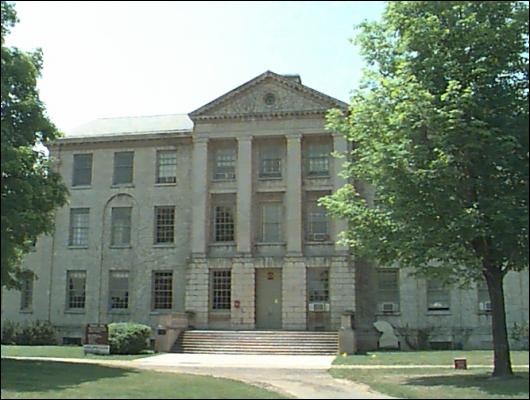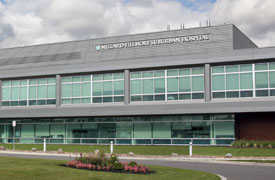Millard Fillmore’s Position on Slavery Still Causing Controversy in His Hometown

The Fugitive Slave Act is still causing a stir 165 years after it was passed—at least in Buffalo, NY.
It is likely that anyone who has been to the city has noticed a commonality among its shops, hospitals, and landmarks: many of these destinations are named after the late President Millard Fillmore. For many, it would be hard to imagine features of the Queen City—such as the Buffalo Historical Society and Buffalo General Hospital—without their association to the president. After all, he was the co-founder of many of these institutions. Even the University of Buffalo, which provides more than 29,000 students with a collegiate education, was founded by Fillmore.

According to The Associated Press, “The University at Buffalo commemorates Fillmore’s January birthday with an annual ceremony at his gravesite at Buffalo’s Forest Lawn Cemetery, where celebrants praise his role in establishing UB, the Buffalo & Erie County Public Library, and the Buffalo History Museum, as well as his securing, as a congressman, funding to expand the Erie Canal.”
While some city officials view these dedications to Fillmore as acknowledgements of his work in Buffalo, the NAACP this year voiced a differ opinion.
To the NAACP, Fillmore was a detriment to the country rather than a figure to be celebrated. Fillmore’s signing of the 1850 Fugitive Slave Act—which required all citizens to cooperate in efforts to capture and return all escaped slaves to their masters—is the basis for their argument.

The NAACP made its concerns public upon speculation that the city plans to name more sites and landmarks after the late president. In an effort to gain public support, the organization has spread their message to local news stations and publications. [EDITOR’S NOTE: The NAACP did not return calls from ECW requesting comment for this story.] Further, the NAACP has sent complaint letters to Buffalo’s state and federal representatives.
In a recent interview with the Albany Times Union, Buffalo NAACP President Frank Messiah explained that the NAACP hopes to stop Buffalo from further naming buildings after the late president.
“We didn’t ask them to destroy anything or remove anything,” said Messiah. “Just don’t do anything to enhance his presence in western New York because, from our perspective, he was not a friend.”
The NAACP wishes that the city of Buffalo would paint a more historically accurate picture of Fillmore—acknowledging both his positive attributes, as well as his contributions to the continuation of slavery.
Viewing the past through the lens of the present.
New England and NY have historical blood on their hands vis a vis the slave trade. Cherry picking the bad guys to vilify seems like a waste….
Fillmore was also the presidential candidate of the anti-immigrant Know Nothings in 1856. He was a disgraceful politician pandering to bigotry.
I went to the University of Buffalo and apart from a multi-purpose room named for him there was almost no student awareness of or interest in Fillmore.
I agree with Frank Messiah. This community has a long way to go to rectify its injustices toward the black community of Buffalo. To start the process let’s admit that fact and begin to discuss how to deal with the issue. Buffalo is rising but the Buffalo black community is in no position to share equally in the new opportunities.